
https://www.youtube.com/watch?v=YeYR1C7NMUI
Make Your Own Vitamin D Supplements for Pennies
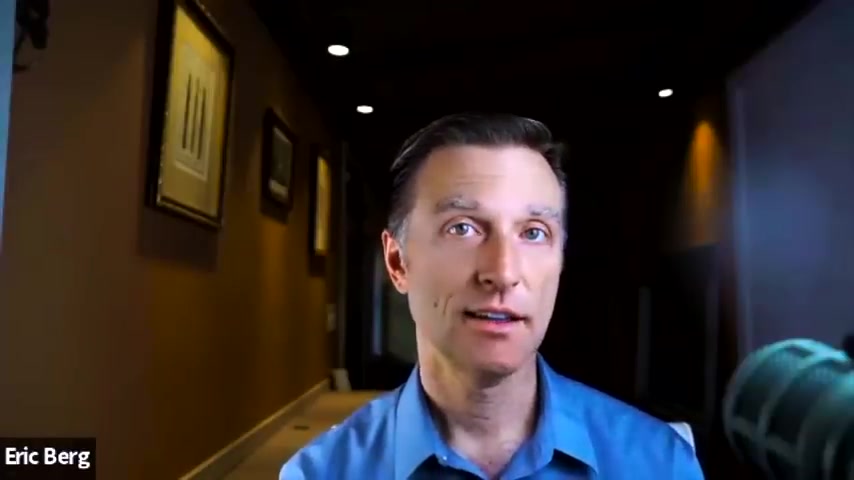
Alright .
This is pretty cool .
I'm gonna show you how to make your own vitamin d supplements using mushrooms .
Now mushrooms are normally grown in the dark , and the only light they see is some fluorescent light when they're either being , picked or processed .
And mushrooms have , very insignificant amounts of vitamin d unless you expose that mushroom to ultraviolet b light .
And there's some very cool research on exposing these mushrooms to light and boosting the vitamin d levels to levels far greater than the RDAs .
You can boost the vitamin d in mushrooms to levels of 5,000 international units to 46,000 international units and beyond .
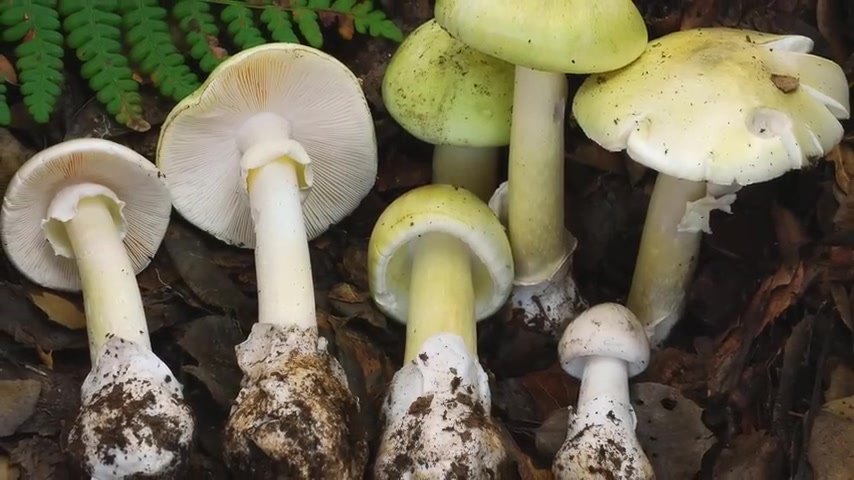
And so in this video , I'm gonna show you exactly how to do it .
You can use oyster mushrooms , Shiitake , Mutake , or button mushrooms .
And there's other mushrooms you can use as well .
And when they did the research and exposed , mushrooms to life , they found that if you expose the gills , the little ridges underneath the cap , you get the maximum conversion to vitamin d .
Now because the button mushrooms don't have those little gills , we're gonna cut them or slice them lengthwise to expose more surface area to create a similar effect .
Now I will say that the type of vitamin d mushrooms have is vitamin d 2 .
And so it's a slightly different version of vitamin d , and it's not as bioavailable .
And it has a shorter , half life , but that's okay because you're gonna be boosting the levels of vitamin d , at a really good range .
So the amount of absorption you're gonna get is gonna be pretty good .
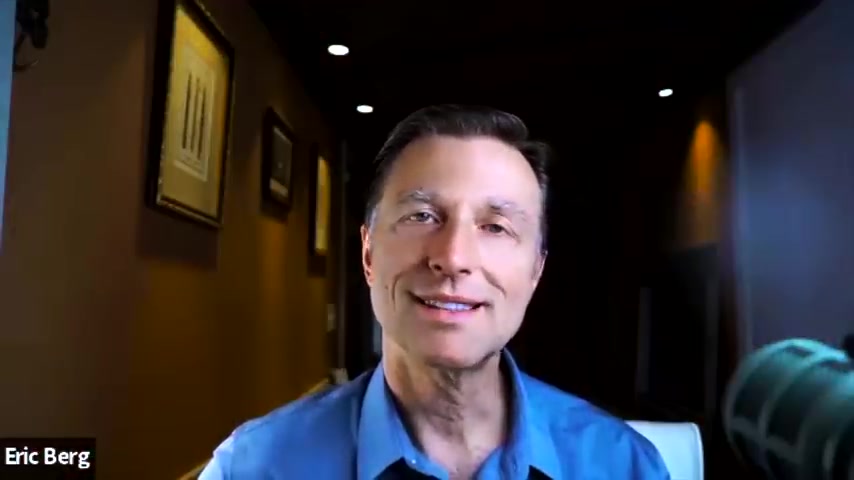
I'm also gonna recommend that you consume your mushrooms with some type of fat like butter , sauteing your mushrooms simply because vitamin d absorption is increased when you add a fat since vitamin d is a fat soluble vitamin .
But mushrooms have some pretty good nutrients .
It has a really good range of b vitamins .
It has selenium , zinc , copper .
It has the vitamin c complex , and it has potassium and many other nutrients .
And they're great on keto because they're low net carb .
Alright .
So this is how you're gonna do it .
You number 1 , you're gonna obtain mushrooms either from the store or finding them in the woods , or you're gonna grow them yourself like I did recently .
But I recommend the shiitake , matake , oyster , or the button mushroom .

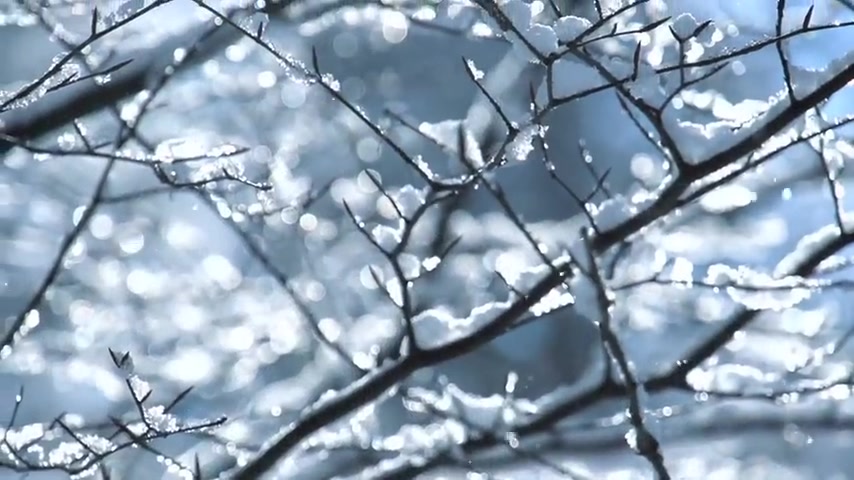
Now in order to have this mushroom create this conversion and spike the vitamin d , you're gonna need , ultraviolet b light .
And , unfortunately , you're not gonna see much of that in the winter , or you're living in certain latitudes in parts of the world in the north .
So I'm gonna recommend that you do this during the summer months , but you can also do it in the winter using a UV light .
So if it's summer , June , July , August , so what you're gonna do is you're gonna take your mushrooms face up .
You're gonna take the stems off so the gills are pointing upward , and the cap is towards this sheet , like a cookie sheet , for example .
So you wanna take the stems out because the stems don't really give you much vitamin d , but the gills do .
So this is mainly for the shiitake , the nitake , or the oyster because the button mushroom doesn't have the gills .
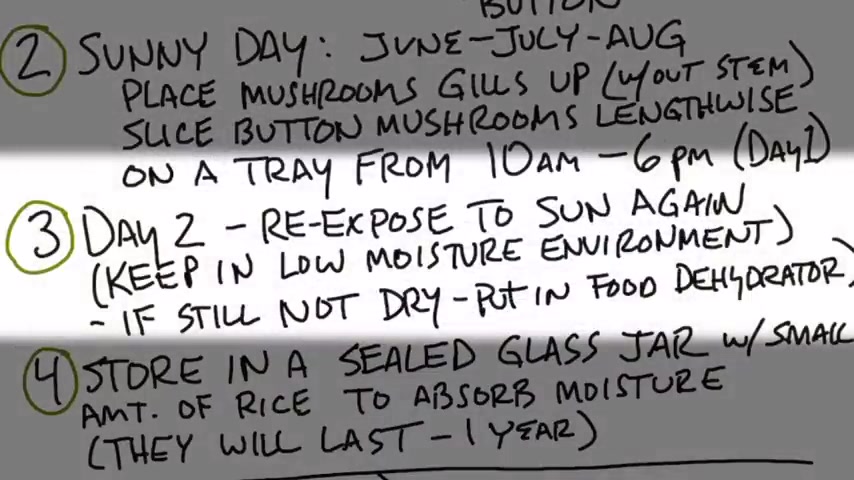
If you're gonna use the button mushroom , I would slice them lengthwise .
K ?
So you're gonna lay them down on a cookie sheet , and you're gonna put these mushrooms out in the sun , k , between 10 o'clock in the morning to 6 o'clock in the early evening .
That will give you 8 hours of exposure to prime sun , which is exposure to UVB radiation .
So at 6 o'clock , you're gonna take this tray back into the house .
Maybe you cover it .
You wanna make sure there's not a lot of moisture because you're trying to sun dry these mushrooms .
Then the next day , day 2 , you're gonna bring them back out in the sun and do the same procedure , expose them to this bright sun between 10 o'clock in the morning to 6 o'clock in the evening .
Then you're gonna bring them back to the house , and , hopefully , they're completely dried out .
The way that you know that they're dried out is you can just snap them in half , and they should be pretty crisp .
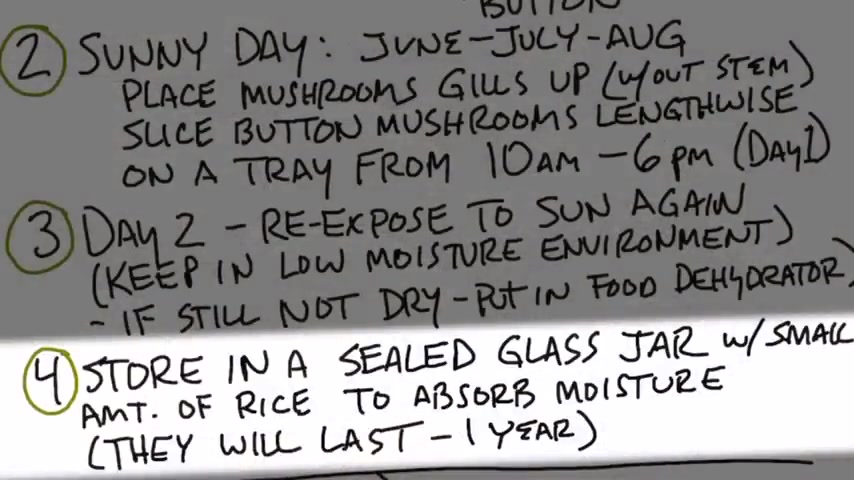
If they're still soggy , then you might need to use a dehydrator to completely dry them .
So once they're completely dry , which they normally should be out in the sun after 2 days , You wanna put them in a glass jar and seal the lid .
I also recommend putting a little bit of , just rice at the bottom , maybe about this thick , just to help you absorb the moisture because moisture reactivates the mushrooms , and we're trying to put them in a dry state to dehydrate them so they'll last up to a year .
So once you get them into this glass container , now you preserve them for a good amount of time .
But they found that if you actually keep drying these mushrooms out in the sun , day 3 , 4 , 5 , the level of vitamin e goes down dramatically .
So you only wanna do this for 2 days .
Now if it's not during the summertime , you can buy a UV light and do the same exact procedure .
But check this out .

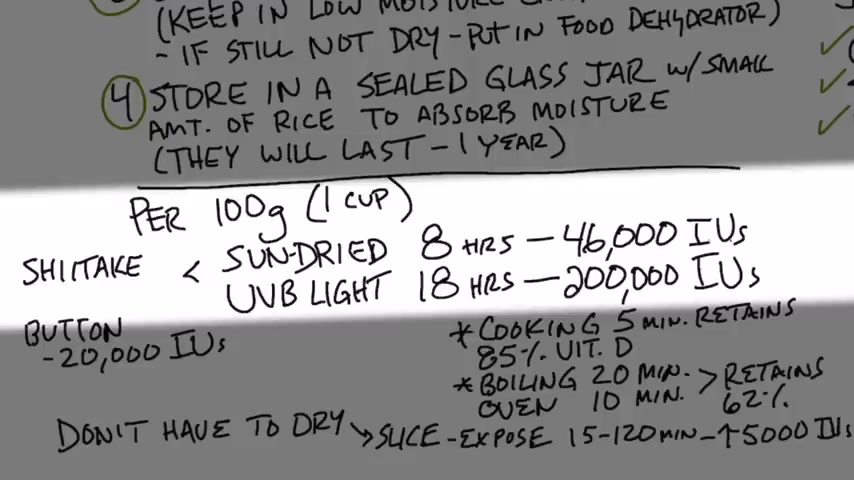
A 100 grams , which is , like , roughly one cup of Shiitake mushrooms , can give you up to 46,000 IUs of vitamin d 2 .
I mean , that is incredible .
Now when you use a a light that has UVB radiation and you expose Shiitake mushrooms for 18 hours , now I hope you're sitting down for this , you could potentially boost the vitamin d 2 .
That's well over 200,000 IUs of vitamin d .
This is mind blowing , but that's the potential conversion if you did do that .
And let's say , for example , you didn't eat a cup .
Let's say you ate just a small amount .
That'll give you a tremendous amount of vitamin d , and you made this vitamin d in your own home .
Now if you do this procedure to button mushrooms , you'll get , a little bit less .
You'll get about 20,000 IUs .
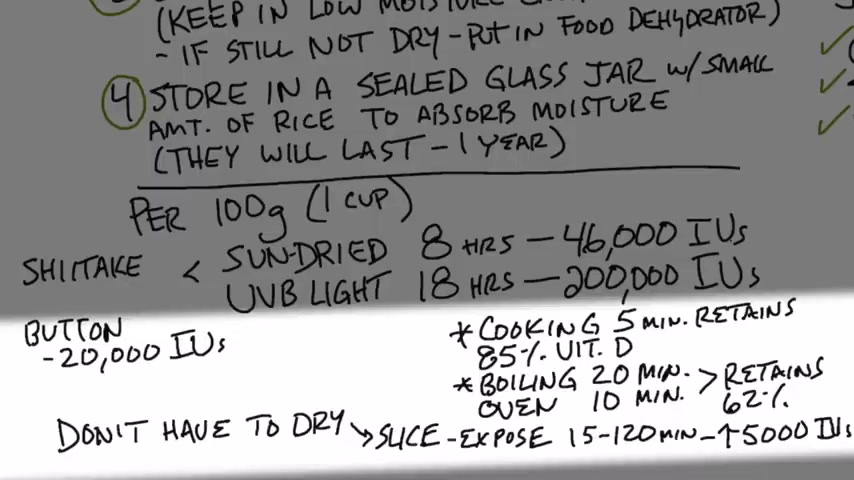
Now in other studies , they're just using mushrooms that are not drying out .
They'll expose just fresh mushrooms in the sun for between 15 and a 120 minutes , and they'll get levels between 600 IUs to up to 5000 IUs just from a shorter period of time .
And this is without exposing the gills .
It's just putting the mushrooms out in the sun .
So the whole point and the whole concept of this is to expose mushroom to the sun or some light that has UVB radiation .
So now that you know how to make your own vitamin d 2 , the next thing is to understand fully the benefits of vitamin d .
And I put that video up right here .
Check it out .
Are you looking for a way to reach a wider audience and get more views on your videos?
Our innovative video to text transcribing service can help you do just that.
We provide accurate transcriptions of your videos along with visual content that will help you attract new viewers and keep them engaged. Plus, our data analytics and ad campaign tools can help you monetize your content and maximize your revenue.
Let's partner up and take your video content to the next level!
Contact us today to learn more.